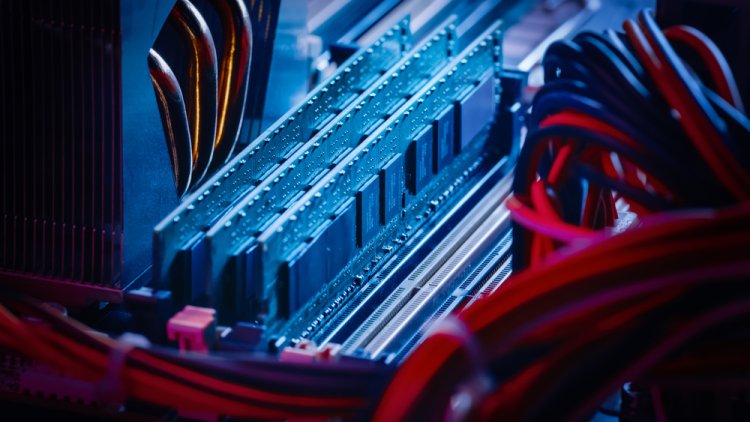Understanding Computer Memory: A Comprehensive Guide
Dive into the world of computer memory, a crucial component of IT hardware. Learn about RAM, storage types, and the role of memory in computer hardware.

Computer memory plays a pivotal role in the functionality of any IT hardware, acting as the workspace where data is temporarily stored and accessed. As technology advances, understanding the various types of computer memory and their applications becomes essential for both IT professionals and enthusiasts.
Types of Computer Memory
Computer memory can be broadly categorized into two types: primary memory (volatile) and secondary memory (non-volatile). Each type serves a distinct purpose in the overall operation of computer hardware.
Primary Memory
Primary memory, often referred to as RAM (Random Access Memory), is a critical component of computer hardware. It is where the operating system, application programs, and data currently in use are kept so the computer's processor can quickly access them. RAM is volatile, meaning it loses its contents when the computer is turned off.
Key Points:
- Dynamic RAM (DRAM): The most common type of RAM used in modern computers.
- Static RAM (SRAM): Faster than DRAM but more expensive, typically used in cache memory.
Secondary Memory
Secondary memory refers to storage devices like hard drives, SSDs (Solid State Drives), and other forms of persistent storage. Unlike RAM, secondary memory is non-volatile, meaning data is retained even when the computer is powered down.
Key Points:
- Hard Disk Drives (HDD): Traditional spinning disks offering large storage capacities at lower costs.
- Solid State Drives (SSD): Faster and more reliable than HDDs, but typically more expensive per gigabyte.
The Role of Memory in Computer Hardware
Memory is a crucial aspect of IT hardware, directly impacting the performance and efficiency of a system. The more RAM a computer has, the more applications it can run simultaneously, and the faster it can handle tasks. Similarly, the type and speed of secondary memory affect how quickly data can be stored and retrieved.
Memory Upgrades and Their Impact
Upgrading computer memory is one of the most cost-effective ways to improve system performance. Adding more RAM can help in multitasking and running memory-intensive applications. Upgrading from an HDD to an SSD can dramatically improve boot times and the speed of data access.
Benefits of Memory Upgrades:
- Enhanced Performance: Faster load times and smoother multitasking.
- Improved Efficiency: Reduced lag in demanding applications.
- Increased Longevity: Helps older systems stay relevant with current software demands.
IT Hardware and Memory Trends
The landscape of IT hardware is constantly evolving, with new technologies pushing the boundaries of what computer memory can do. Some of the latest trends include:
DDR5 RAM
The latest generation of RAM, DDR5, offers higher speeds and greater efficiency than its predecessor, DDR4. It is becoming increasingly common in new computer hardware.
NVMe SSDs
Non-Volatile Memory Express (NVMe) SSDs provide faster data transfer rates compared to traditional SATA SSDs. They are ideal for high-performance computing and gaming.
Conclusion
Understanding the various aspects of computer memory is essential for making informed decisions when selecting or upgrading IT hardware. From RAM to storage devices, each component plays a vital role in the overall performance of a computer. As technology advances, staying updated with the latest trends in computer memory ensures that your IT hardware remains efficient and competitive.
By investing in the right memory components, you can significantly enhance the performance and longevity of your computer hardware, ensuring that it meets the demands of modern computing.
What's Your Reaction?


















